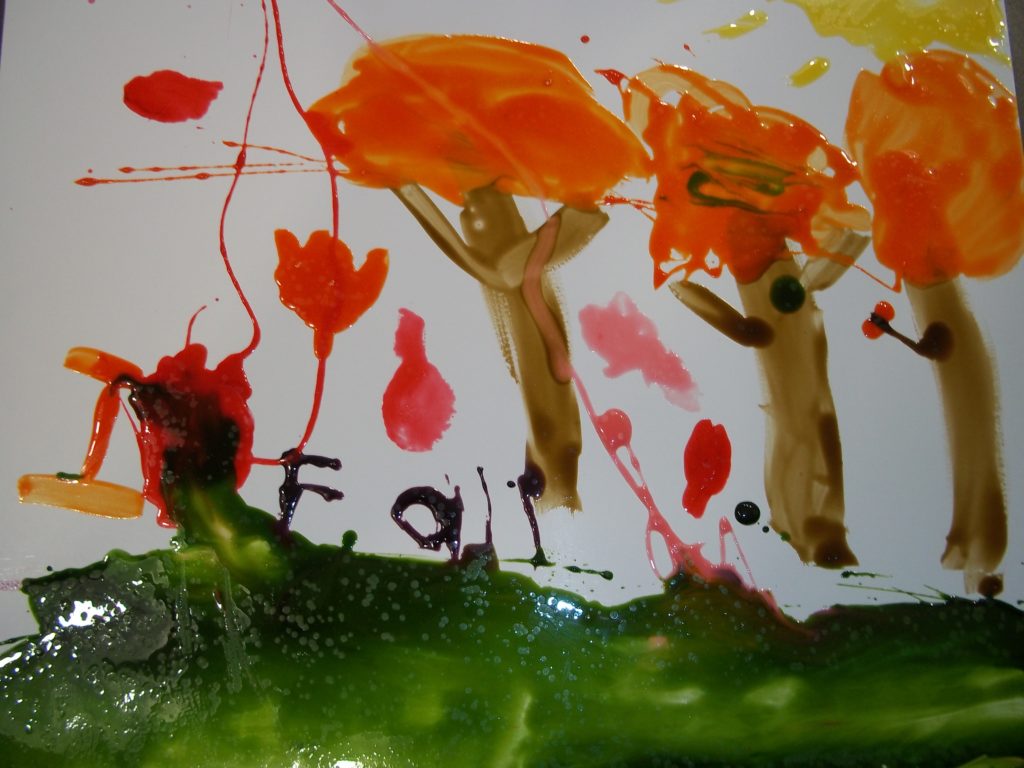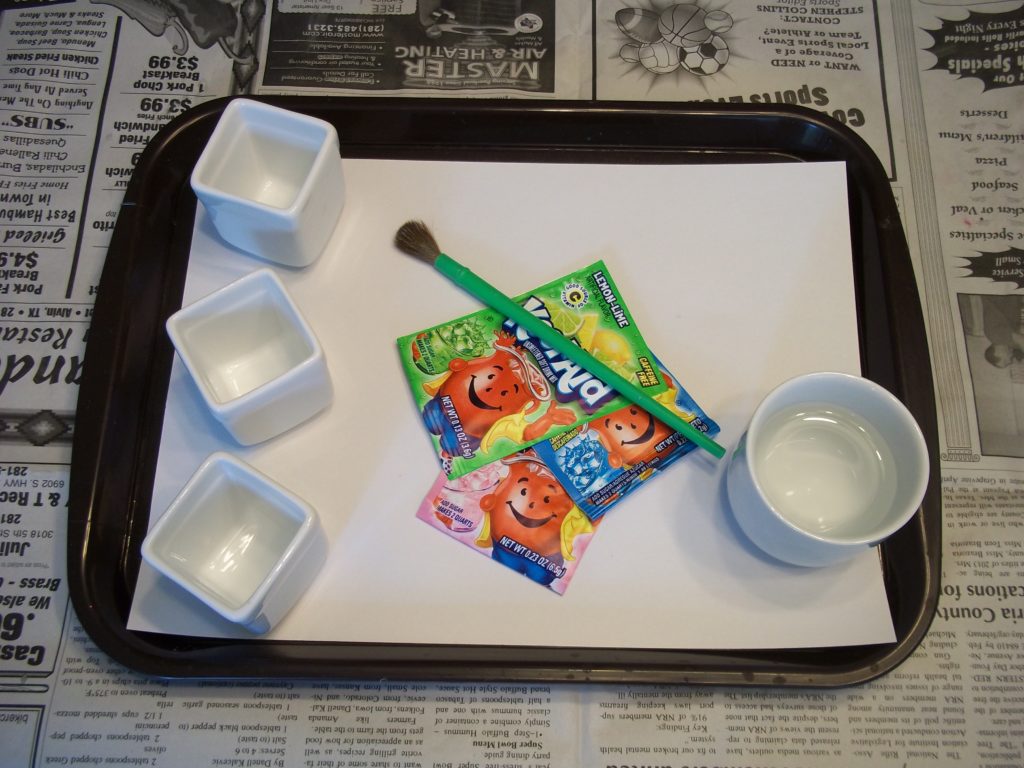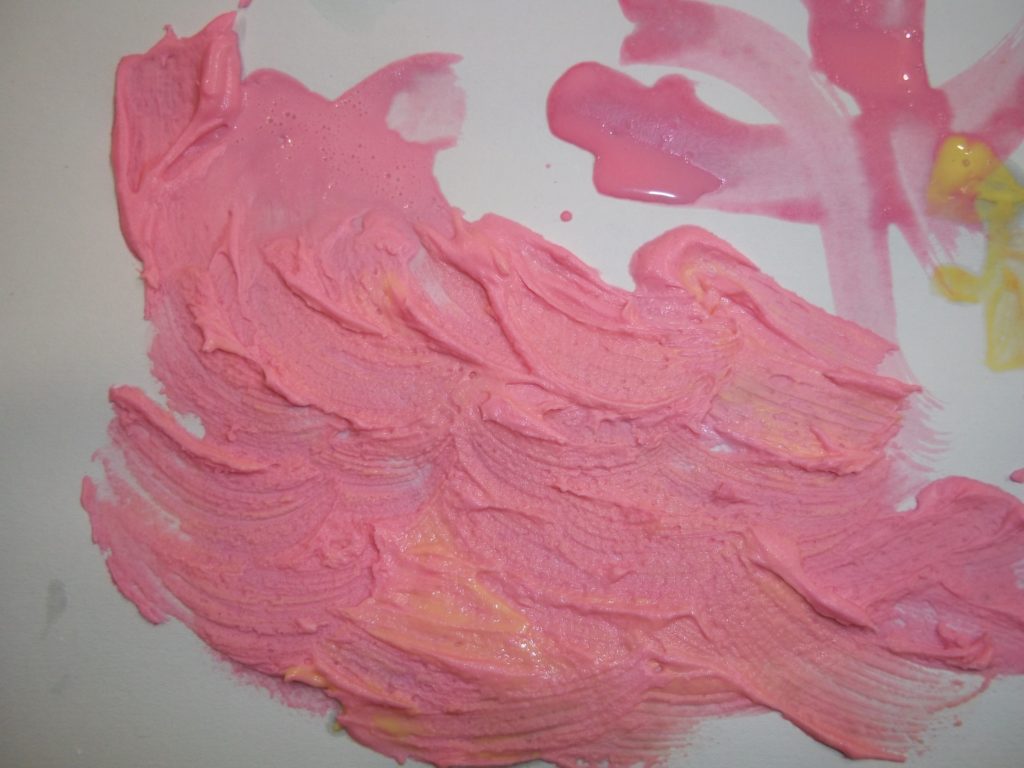I love Process Art; its the joy of experiencing colors and textures for the purposes of learning and enjoying rather than creating. I want to share some information and projects from my book: Process Art: Paint which fully embodies these concepts. Over the next few weeks, I’ll share why this is valuable as well as a number of fun and easy projects you can help the child or children in your care enjoy.

The Value of Process Art
Process Art is about exploring and creating. It is unscripted. There are no right and wrong ways to create in Process Art. Everything included in the book is designed to be about the process. The results will sometimes be spectacular and sometimes not. For example, some children will continue to mix colors until they become a big mess of ugly brown. Those children are learning what happens as they continue to mix colors. Allow children to repeat activities to further define their skills. They may choose to do it differently after several processes ending in the brown blob.
The results are not the purpose, they are the product. The purpose is the cognitive and fine motor learning that happen when children are allowed to explore the art process. It is fun and enjoyable and the children may not even realize how much they are learning.
Painting is an important application in Process Art. It is a fun part of early childhood and it has much to offer in the way of learning and development. The benefits of painting include both cognitive and fine motor development. As children think about what they want to create; explore different materials and methods; and predict what will happen; they are completing cognitive learning processes. Yes, painting using the Process Art method is much more than an art activity. The projects in this book allow children to incorporate higher level thinking skills and learning. Children will be able to create their own paint; explore different materials; experiment with how those materials can be used for different effects; and in the process, they will be learning much more than how to simply paint a picture.

The pictures included in the book were completed by young artists in a home setting. The pictures are real examples. They were not altered or fixed to be perfect. They provide good examples of Process Art.
The Projects
The book was designed to put Process Art painting ideas together so that many ideas are readily available to busy parents, child care teachers, and elementary teachers. and I’m going to share ideas from the book with you. The ideas are not all original. The ideas are simple and timeless art processes which provide an easy reference for parents and teachers of young children. Taking inspiration from the Reggio Emilia approach, provide the materials and some basic ideas and let the preschool artists in your home or your care decide how to use them. You will be amazed at what they can come up with. This is part of the cognitive learning that occurs in Process Art. Let the children think and create.
As you try the painting ideas with your children, let your ideas flow and let your children work with the materials to create their own unique concepts of how the materials and processes can be used. As the projects here were tested, the young artists testing them became more and more interested in all the different ways they could change, adapt, and create with the materials. Enjoy the process as you listen to the children’s oohs and ahhs as they see what happens when they create using the painting methods in this book. There are also extension activities at the end of many projects. These are more ways to use the materials and create additional learning opportunities. You and the young artists in your care can continue on with even more ideas as you explore and learn.

The methods included are simple, inexpensive, tested and appropriate for young children. Most projects require only a few basic supplies. Many of the items can come right out of your home or child care center’s kitchen. Choose the projects and materials that are best for the children in your care. If purchasing commercially produced paints, make sure they are non-toxic. Many of the homemade materials include edible ingredients. For the youngest children, select only materials made from food safe products. Then, if the materials go into their mouths, there are no worries. Choose your painting projects based on the ages and abilities of the children in your care.
Before you start, collect some basic materials to be used during your Process Art lessons. These include items to cover surfaces such as cheap plastic table cloths and old newspapers. If you are in a child care program, ask your parents to bring some old newspapers, you will be stocked with surface covering materials in no time and at no cost. Another good resource is the usage of plastic food trays. These can be purchased at restaurant supply companies, and through educational supply companies. These provide a nice base to keep the messy painting projects from getting onto other surfaces. If you have enough trays for each child, these make a nice way to move a project to a drying area and allow it to dry without picking up a saturated piece of paper.
Take Care in Applying the Projects
Take care to fully understand the age, cognitive, and developmental level of the children in your care. If you have children who will put things in their mouth, choose projects which utilize food based ingredients for safety. Be careful of choking hazards in young children. There is no substitute for careful supervision within any setting involving small children. Always choose appropriate activities and carefully supervise how those materials are used with the children in your care.
Keep in mind that food coloring can stain just as most commercially prepared paints have the potential to stain clothing. Take care in choosing the activities and a set up that will minimize damage to children’s clothing. This can include utilizing smocks or old shirts to protect clothing while painting. Food trays can be used to contain art projects and minimize the effect of spills. It is also recommended to cover all tables and the floors below the painting area with newspaper or plastic table cloths to contain spills.
Let’s Get Started
Whenever possible, involve children in the process of creating the materials, as well as, in the process of creating the art work. The process of creating materials is often a completely enjoyable and very educational experience in itself. It has great value as children learn what happens as they add color, mix and stir ingredients, and make changes to those ingredients. Take time and enjoy the “process” as children focus and learn many new skills both in the areas of fine motor and cognition.

Most of all remember don’t “fix it.” Process Art is about the learning and experience. It’s exploratory, fun, creative, and inventive but never wrong. Process Art is not about the final product, it’s about the process and the benefits that come from experiential learning.
In our next post we will get started and “Enjoy the Process” of creating!

All of the Process Art painting projects included in this series of posts and many more are in the book. All of my books are available at Amazon.com. Direct links to all of the books can be found on the page “Dr. Andrea’s Books.”



